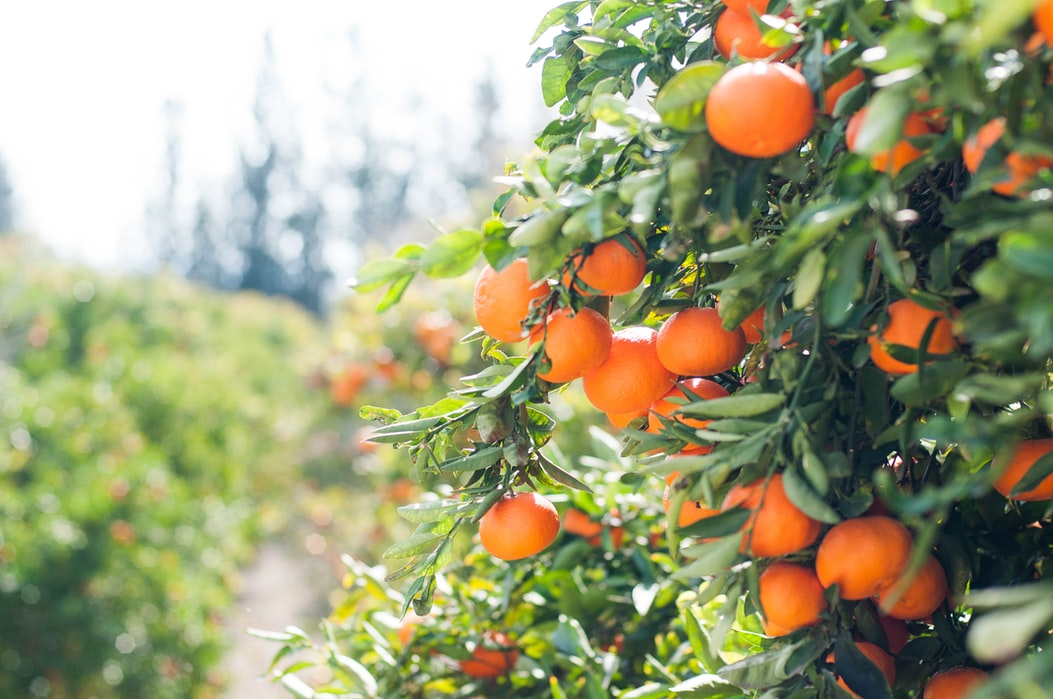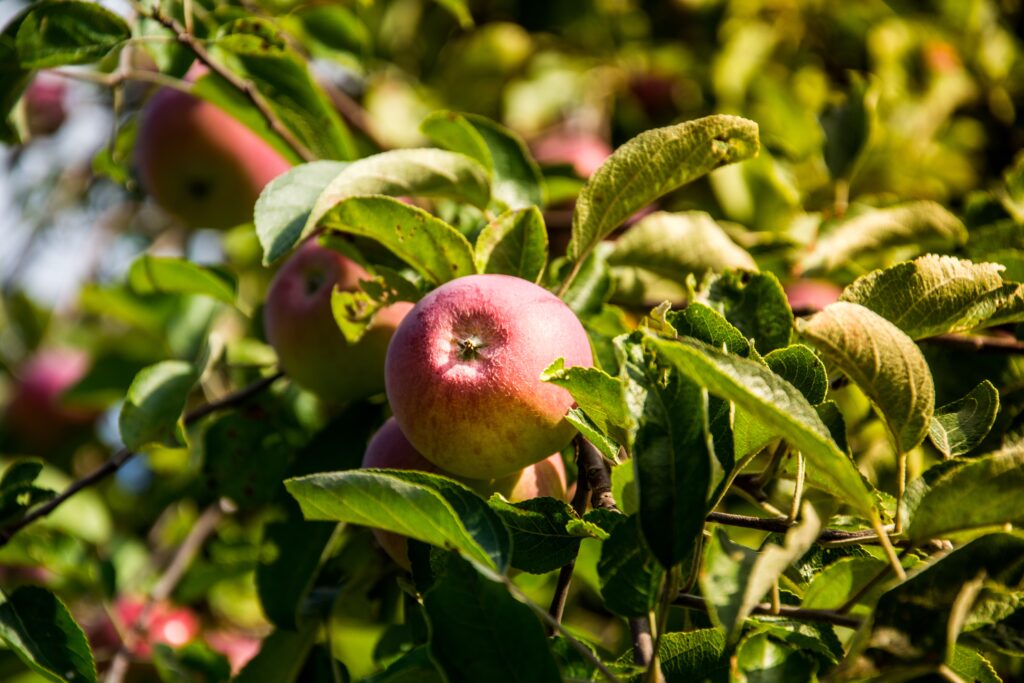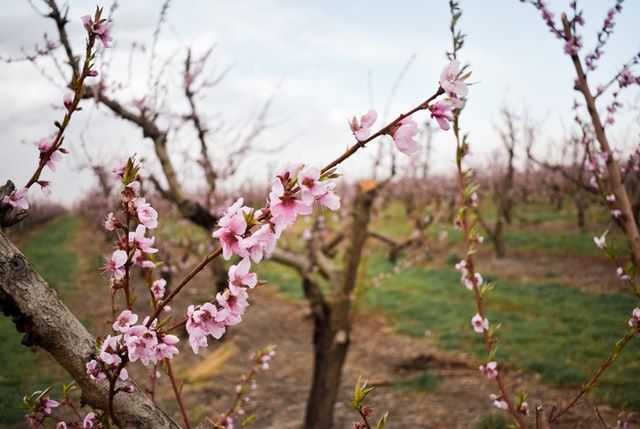
03 Aug Growing Fruit Trees – Part One
Growing fruit trees is another dimension you can add to your edible garden. In this issue we will focus on growing citrus, stone fruit and the pome fruits such as apples. Next issue in our Garden Greetings Newsletter we will focus on avocados, persimmon and pomegranites
Citrus
Citrus trees are a versatile bunch! Whether you grow one single tree in the corner of your yard or you have a whole orchard you will be surprised at their hardiness and unique character. They can be grown in pots, or if you have a small space you could select a dwarf variety to plant out. Most species can be hedged, topiarised or be a lovely evergreen feature tree. The key to growing citrus is that they all require full sun and lots of it. They do not like windy locations as this can damage the flowers and in turn the fruit production. Citrus hate a heavy soil so they need a very well drained soil but it will need to be highly organic.
They tend to like a soil with a pH of 6 – 7.5. When it comes to feeding them they are heavy feeders as you can imagine it takes a lot of energy to produce those big juicy fruits. Normally it is best to fertilise them once a season with an organic fertiliser and you can then supplement this with a liquid feed in between. All citrus like to have a deep watering. Once established this means a big water less frequently, than lots of short waters. The soil needs to be allowed to reach the dryer side of moist before giving them another deep watering. Over watering can also cause the trees to drop all of their fruit. All citrus have shallow root systems so therefore you should keep them well mulched, however do not allow the mulch to touch the base of their trunks as this may encourage disease.
Most will tolerate some frost once established although whilst they are young it is best to give them protection when a frost is predicted. In general mandarins, oranges and grapefruit will tolerate more frost than lemons and limes. There are also some varieties within the same species that can cope better with a winter chill than others. Here in the Hilltops Region I would recommend planting the Lisbon Lemon or the Meyer Lemon, the Tahitian Lime, the Washington Navel Orange and the Australian Cumquat (also known as the Calamondin).
All of the citrus tend to flower through the Spring and Summer months with the fruit starting to develop in Autumn through Winter. The flowers alone are a lovely feature with a strong but enjoyable fragrance. All citrus will benefit from a light prune straight after harvest but don’t leave it too late as you will end up loosing next year’s fruit. Older trees will need a renovation prune every 5 – 8 years or so. This will involve cutting back the branches heavily, thinning out the canopy and opening up the centre of the tree.

Pome Fruit
Fruit trees that develop a Pome fruit are all members of the Rosaceae family for example Apples, Pears and Quince. All forms are deciduous trees and all tend to have their fruit ripening in the late Summer to Autumn months. They also have the added benefit of gorgeous Spring blossoms.
In general they like a sunny location with free draining soil and protection from strong winds. They prefer a slightly acidic soil of 5.8 to 7. If trees require pruning this is best completed during winter whilst the trees are still dormant.
However you need to be aware of when and where the fruit develops on the trees for example the fruit on many apples starts to develop on two year old or older wood so you need to ensure whilst you are pruning that you are not pruning off next seasons fruit. It is beneficial to ensure the trees like stone fruits have more of vase shape habit with open centres so that sunlight can reach the centre of the trees and there will be good air ventilation around the branches. Allowing the sunlight into the centre of the tree will increase the number of flowers and therefore fruit developing. It will also help prevent disease from developing.
Most trees will need two trees to pollinate or you need to choose self pollinating varieties. You need to select two species that will flower at the same time or at least overlap in their flowering for a period so that the trees can cross pollinate. They all enjoy a good winter chill to help bring on the fruit set however there are some trees that will still set fruit with less of a chill than others. These are the ones for you if you are living in a slighter warmer climate. Fertilise trees in Spring, Summer and Autumn with a well balanced organic fertiliser and then use a fish or seaweed emulsion in between these times. There is no need to fertilise in the middle of Winter.

Stone Fruit
Stone fruits like the Pome fruits are all deciduous, they will give you some lovely Autumn colours, then go dormant in the Winter (this is the best time to plant them), then they develop beautiful blossoms in the Spring followed by fruit in the Summer months and early Autumn. Apricots, Peaches, Nectarines Cherries and Plums are all stone fruits.
Out of all the stone fruits the Cherries will need the longest amount of winter chill to develop good fruit. Stone fruits enjoy a deep well drained soil which has a high organic matter content with a pH of 6 to 7. Ideally they like to be planted on north facing slopes where the drainage is good and they can get protection from strong winds. All stone fruit need reliable moisture especially during the hot dry Summer months when the fruit is developing.
Peaches. Nectarines and Apricots are all self pollinating whilst Plums and some Cherries will require more than one tree for the tree to be pollinated. Enriching the soil with compost and decomposed manure before planting and continuing to add compost in the Spring and Autumn months will ensure the trees have access to good organic matter. It is also best to keep all trees well mulched



